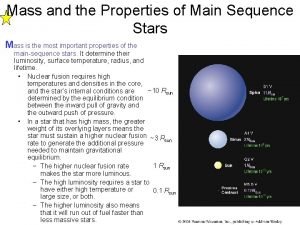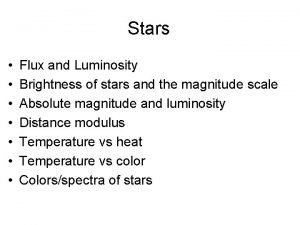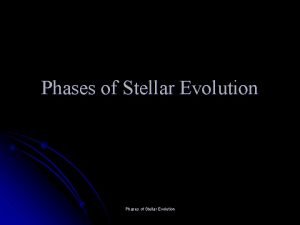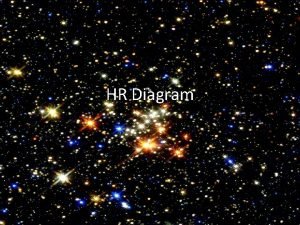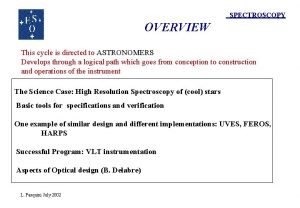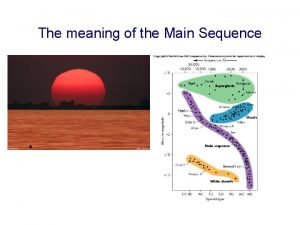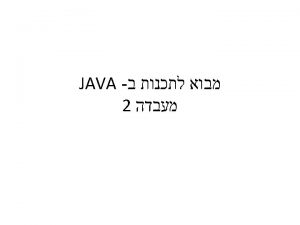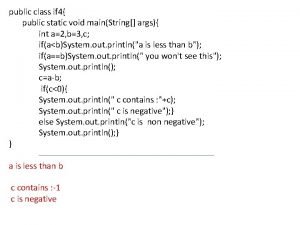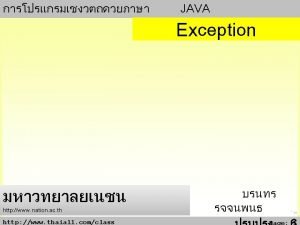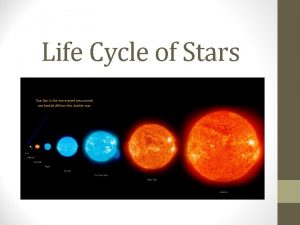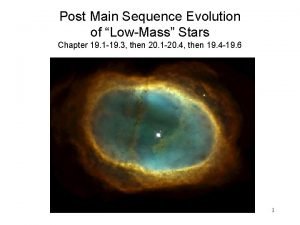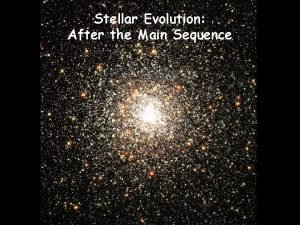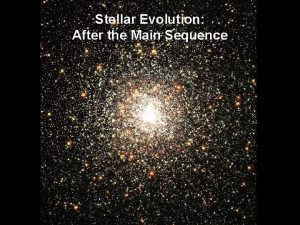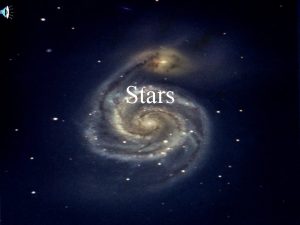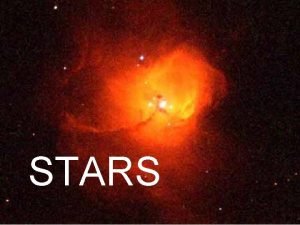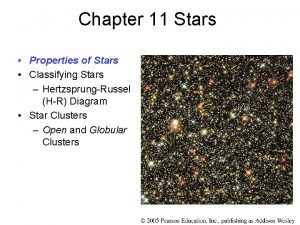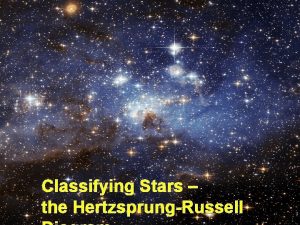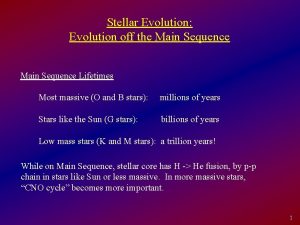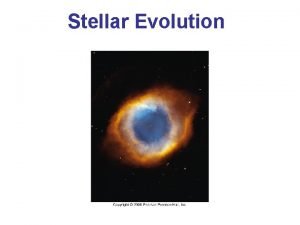Class 7 Post main sequence evolution of stars




















- Slides: 20

Class 7 : Post main sequence evolution of stars n Evolution of “low-mass” stars l l n Essentially follow same path as Sun (discussed last semester) Will recap briefly Evolution of “high-mass” stars

I : Low mass stars (M<8 Msun) n n Main sequence corresponds to H He burning… lasts for a time that we estimated last class Once hydrogen runs out… l l Core contracts; envelope expands Red Giant If M>0. 4 Msun, start to burn He C through the triplealpha process (occurs explosively if 0. 4 Msun<M<2 Msun; gradually if M>2 -3 Msun) The expels stellar envelope in series of explosive events (novae)… form a planetary nebula He or C core remains as a white dwarf… dense (stellar mass but size of Earth) and hot



Triple-alpha process Kicks in at about 100 million K







II : Evolution of a high-mass star n Stars with M>8 Msun take a different path… core gets hot enough that nuclear burning can proceed beyond Carbon l l There is a sequence of reactions that go all of the way from H to Fe (iron) The fusion reactions get less and less efficient as the sequence proceeds… mass must be processed as a progressively faster rate in order to satisfy stars demand for energy Iron is the end of the road… it has the most stable nucleus and so you cannot extract energy by fusing it End up with a shell-like (or onion-like structure)… an iron core surrounded by a shell of Si Fe burning, which is surrounded by a shell of O Si burning etc.




n What happens next? l l Once iron is reached, fusion stops in core Without energy production, core is slowly crushed When Mcore~1. 4 Msun, pressure forces become incapable of supporting core… core undergoes catastrophic gravitational collapse (takes a few seconds) Energetics of core collapse… § § l releases about 1046 J 99% emerge as neutrinos Star is blown apart… core collapse supernova 1% of energy (1044 J) emerges as radiation and kinetic energy Fusion reactions during the supernova responsible for all elements heavier than iron




n n What happens to the core? If M<20 Msun l l n If M>20 Msun l l n Becomes neutron star (M~1. 5 -2 Msun, R~10 km) Matter gets “neutronized” Core collapses all of the way to a black hole M~3 -10 Msun, R=5 -30 km More about these in later classes
 Properties of main sequence stars
Properties of main sequence stars The stars there are millions of stars in the sky
The stars there are millions of stars in the sky Absolute magnitude to luminosity
Absolute magnitude to luminosity 4 types of evidence for evolution
4 types of evidence for evolution Nucleotide to amino acid
Nucleotide to amino acid Pseudocode for repetition
Pseudocode for repetition Finite series
Finite series Convolutional sequence to sequence learning.
Convolutional sequence to sequence learning. Evolution of class iii treatment in orthodontics
Evolution of class iii treatment in orthodontics Zero age main sequence
Zero age main sequence High mass main sequence star
High mass main sequence star Protostar
Protostar Main sequence fitting
Main sequence fitting Main sequence meaning
Main sequence meaning Difference between will and going to future
Difference between will and going to future Tell more about the main idea
Tell more about the main idea Void main int main
Void main int main Class operators public static void main
Class operators public static void main Public static void main
Public static void main Public class x public static void main
Public class x public static void main Public class x
Public class x
